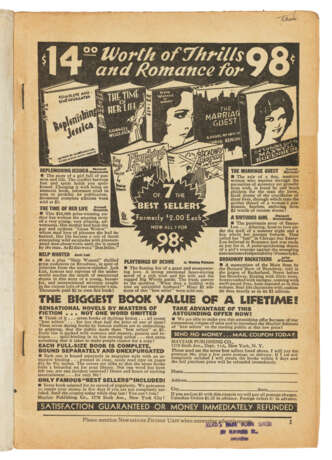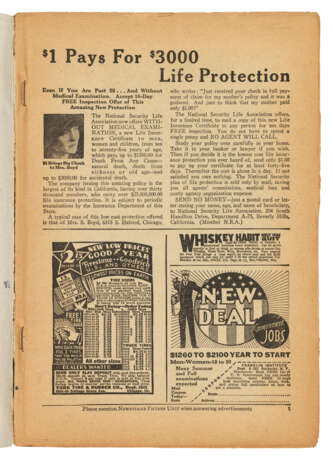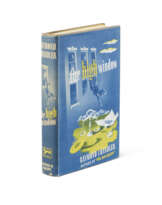ID 1016501
Lot 10 | Black Mask
Estimate value
£ 5 000 – 8 000
Raymond Chandler
[Raymond CHANDLER (1888-1959)] – 11 short stories published in BLACK MASK: ‘Blackmailers Don’t Shoot’ (Dec. 1933); ‘Smart Aleck Kill’ (July 1934); ‘Finger Man’ (Oct. 1934); ‘Killer in the Rain’ (Jan. 1935); ‘Nevada Gas’ (June 1935); ‘Spanish Blood’ (Nov. 1935); ‘Guns at Cyrano’s’ (Jan. 1936); ‘The Man Who Liked Dogs’ (March 1936); ‘Goldfish’ (June 1936); ‘The Curtain’ (Sept. 1936); ‘Try the Girl’ (Jan. 1937). New York: Pro-Distributors Publishing Co., 1933-37.
Chandler’s first appearance in print: a complete collection of all his short stories first published in pulp fiction magazine, Black Mask. Very rare in this condition. The most important pulp magazine, Black Mask played a pivotal role in Chandler’s development as a writer. It was first launched by H.L. Mencken, devoted to ‘the best stories available of adventure, the best mystery and detective stories, the best romances, the best love stories, and the best stories of the occult’ and had already published writers such as Dashiell Hammett and Frederick Nebel. Chandler honed his skills in its pages, publishing 11 stories or novelettes before his first book, and it launched his reputation as a foremost writer of detective fiction. Most stories feature private detective Carmady or Johnny Dalmas, precursors to Philip Marlowe.
Chandler’s early life was marked by an alcoholic and absent father and education in the UK (including at Dulwich College), France and Germany, followed by a restless work life as a journalist, British civil servant, US farm worker, and accountant, the restlessness due in part to his own alcoholism. When he was fired from his job as an oil company executive in 1932 he picked up a copy of Black Mask and turned to writing, publishing his first piece the very next year. Black Mask reached its heyday between the two world wars, especially under Joseph T. Shaw, editor of the magazine from 1926-1936. Between February 1923 and April 1924 Black Mask was issued bi-weekly instead of monthly. Bruccoli C40-51.
11 issues, octavo. Original pictorial wrappers by Fred Craft, Rudolph Belarski, or John Drew (light chipping or minor wear at extremities, 3 issues with old creases, one issue missing final date digit at extreme fore-edge); modern black cloth box. Provenance: one issue stamped Read’s Rare Book Shop on front wrapper, another stamped Baxter’s Book Exchange.
| Auction house category: | Printed books |
|---|
| Auction house category: | Printed books |
|---|
| Address of auction |
CHRISTIE'S 8 King Street, St. James's SW1Y 6QT London United Kingdom | |
|---|---|---|
| Preview |
| |
| Phone | +44 (0)20 7839 9060 | |
| Buyer Premium | see on Website | |
| Conditions of purchase | Conditions of purchase |






















